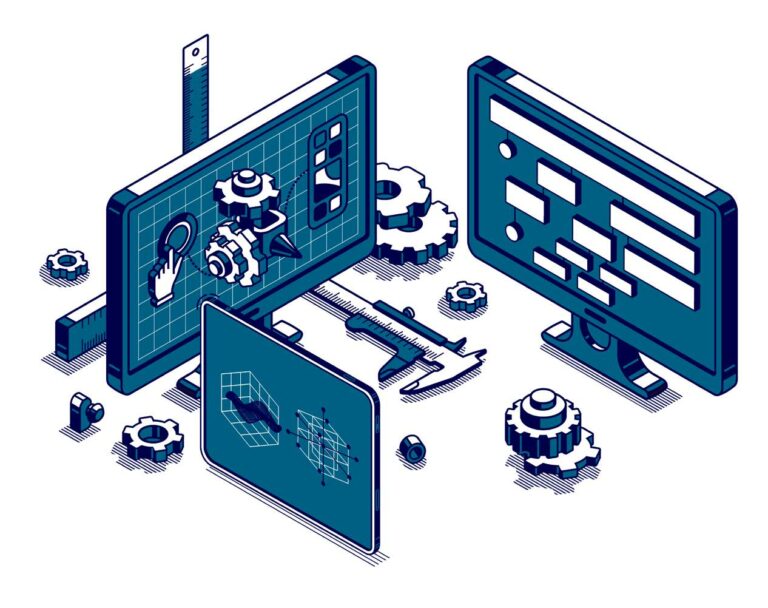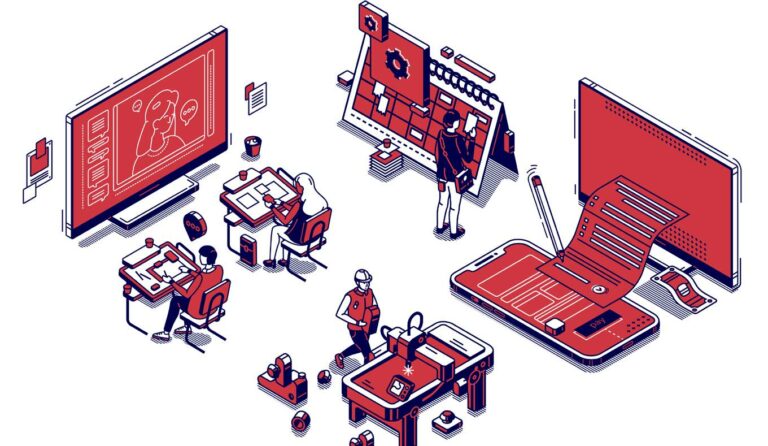DOD can access these resources on the internal AFMC Digital Guide.
Counter to the U.S.’ current trajectory of ever-increasing acquisition timelines,3 DMM accelerates all phases of the materiel lifecycle from invention to modification. Every phase and AFMC organization plays a role. The common threads uniting the entire materiel ecosystem are models, data, and infrastructure. What those threads mean for each lifecycle phase and the outcomes they generate are critical to aligning the entire capability delivery process.
DMM revolutionizes accelerated and continuous acquisition reviews (e.g., System Functional Review [SFR], Preliminary Design Review [PDR]) via shared, accessible models of the system. Process and design models are not an artifact of development—they are development. No over-the-wall engineering. In this phase, truly collaborative designs are built on shared models, shared data, and common infrastructure that set the stage for all subsequent lifecycle phases. Outcomes include significantly accelerated, continuous design reviews and quick-turn, targeted performance modeling (e.g., C-130J electrical load analysis).
DMM enables a testing regime focused on the validation of models.
Leveraging model validation allows for more targeted (e.g., areas of
uncertainty or concern from the models) and adaptable testing as
models gain refinement and resolution. The increased confidence in the models will accelerate certification timelines (e.g., Airworthiness, Cybersecurity, Nuclear Surety). The models, data, and infrastructure born in previous phases feed virtual environments such as the Joint Simulation Environment (JSE). Outcomes drive assured lifecycle system performance and confidence in manufacturing design.

DMM is used to investigate reliability, availability, maintainability, and supportability (RAMS) capabilities and modernization options (e.g., Logistics Composite Model Analysis Toolkit [LCOM ATK]); improve lifecycle support moving from managing by averages to managing by the tail; enable tailored planning for field and depot maintenance; and improve supply planning accuracy. Additionally, standardized data and processes for management of product data (e.g., Air Force-Product Lifecycle Management [AF-PLM]) underpin accelerated outcomes in automated and intelligent supply chain management.

DMM supports data-driven reliability improvements (e.g., preventative maintenance, condition-based maintenance); weapon readiness (e.g., Finite Element Analysis [FEA] enabling real-time assessments for identified weapon system defects, streamlined service life extension practices); and geometric digital twin technologies for resolving Diminishing Manufacturing Sources and Material Shortages (DMSMS).
Additionally, DMM extends the service life of weapons systems by truly designing to sustain from the beginning—with the digital backbone to back it up. Outcomes include accelerated Periodic Depot Maintenance Cycles, realistic affordability initiatives, and just-in-time part delivery.
DMM facilitates rapid weapon system upgrades through open
architecture implementation, model-based technical data packages (TDPs), geometric digital twinning, and process modeling artifacts. Gone are the days of 2D drawings and lengthy process reviews. DMM products will produce outcomes that slash modification timelines for every system while assuring intellectual property (IP) protection for the government and industry.
DMM leverages existing tri-service standards and criteria for Building Information Modeling (BIM) and Civil Information Modeling (CIM) to bolster installation infrastructure, underpinning the airmen and guardians who establish, operate, and recover our power projection platforms for high-end conflict. Emerging DMM initiatives such as digital twinning and Infrastructure Common Operating Pictures accelerate program delivery, empower proactive design and construction decisions, eliminate design clashes, minimize construction rework, and optimize sustainment of natural and built infrastructure.
Lifecycle DMM accelerates integrated capability delivery by threading models, data, and infrastructure throughout the materiel lifecycle. Those models, data, and infrastructure can serve as authoritative digital sources of truth for all aspects of integrated capability delivery. Harnessing those mechanisms for ubiquitous functional use will break down traditional stovepipes and accelerate functional timelines.
Counter to current organizational stovepipes limiting AFMC acquisition agility, DMM revolutionizes the ability of each functional to accelerate within and across functional domains. Integrated tools built on models, data, and infrastructure yield radical transparency throughout government and industry teams. That omniscience results in functional teams that can collaborate like never before to accelerate integrated capability delivery.
DMM means real-time technical reviews for engineers.
MBSE and digital design and analysis tools hosted on enterprise infrastructure provide real-time access for government and industry partners. As a result, Government engineers can shift from reviewers and critics to truly collaborative design partners.

DMM means instant access to current budget, cost, and program execution data for financial managers.
System performance models can rapidly reflect cost considerations in design trade-space analysis, allow financial professionals to execute a series of ‘what-if’ analyses to work towards an optimal solution for the enterprise, and streamline Financial Improvement and Audit Readiness (FIAR) compliance for all lifecycle phases.
DMM means automated data-driven decision-making for logisticians.
Digital product support uses digital methods, data, and system models to implement the Product Support Strategy, enable data-driven decision-making, and deliver effective and efficient product support outcomes throughout the system lifecycle. Design activities and product support teams are tightly integrated, enabling us to better understand the system of systems and proactively address issues such as structural fatigue, DMSMS, and workforce skills analysis.11

DMM is the disruptive enabler we need to accelerate capability delivery through a fully empowered digital workforce equipped to deliver integrated,
innovative, and trusted capability across the lifecycle, with unprecedented industry and government collaboration. We will achieve this vision through
the execution of six key initiatives.
We will make a cultural shift to collaboration versus review, as DMM capabilities provide real-time interaction between government and industry.
We will ensure programs and organizations share a common vision of applying digital-first strategies to their work across all functional disciplines.
We will deploy data standards, formats, and reference architectures for lifecycle use.
We will use and provide access to PLM tools, system and process modeling tools, design tools, and analytics tools across all functional disciplines.
We will train the workforce to use and understand the power of DMM tools.
We will modernize IT infrastructure (characterized by speed, agility, connectivity, and accessibility) to set the foundation for DMM progress across the Enterprise.
This site is updated regularly. Please send any suggestions for further improvements to [email protected]
Feel free to get in touch by sending us a message.
Copyright © 2021-2023 Collaboration.ai